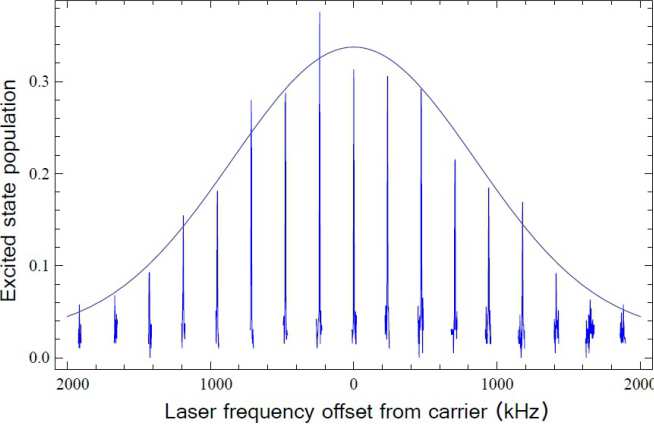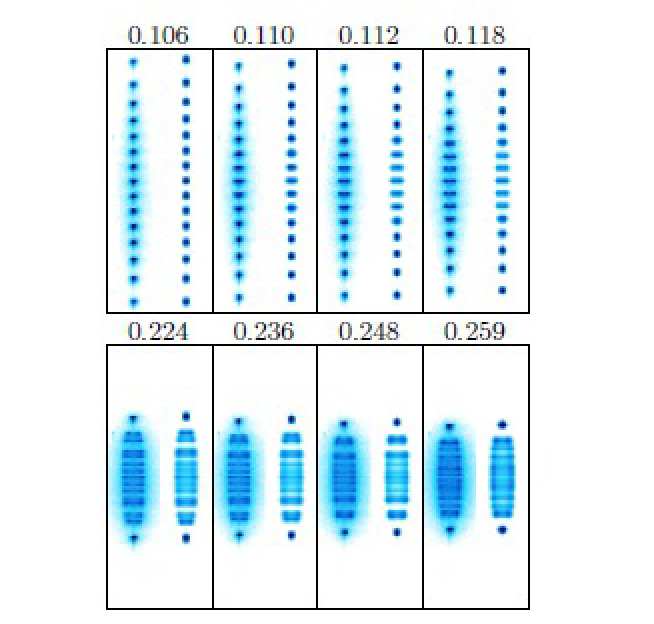Research (old)

Six ion chain w/ one dark
At the Ion Trapping group at Imperial College London we use a Penning trap in order to spatially confine singly-ionised calcium-40 ions. We then use lasers to cool them to millikelvin temperatures. A Penning trap is a type of ion trap that uses static electric and magnetic fields, rather than the radio-frequency oscillating electric fields found in a Paul trap. Positive voltages are applied to two endcap electrodes which creates a harmonic potential along the axis of the trap, and a magnetic field is applied along this axis which causes the ions to orbit the centre of the trap in the plane perpendicular to it.
The magnetic field means that there is a large splitting of the electronic energy levels and we need to address many different transitions in order to create a closed laser cooling cycle.
The focus of our current research is split into two main areas: working with single ions in order to perform high-resolution spectroscopy and to achieve cooling beyond the Doppler limit, and also the control of small ion Coulomb crystals.
Current research areas
Single-Ion Spectroscopy

We perform high-resolution spectroscopy on laser-cooled single ions by scanning the frequency of an ultra-narrow-linewidth laser across a transition to a long-lived excited state.
Cooling ions in a Penning trap is complicated by the form of the radial motion which can be described as an epicyclic superposition of two orbital motions (modes). Both of the radial modes are associated with negative potential energy (compared with an ion at trap centre), and one of them is associated with a negative total energy. This means that energy must be added to this mode in order to reduce the amplitude of motion.
The motion of the ion means that in its rest frame, the frequency of the spectroscopy laser appears modulated due to the Doppler shift. This adds sidebands to our spectra, which give us information about the motion of the ion and allow us to define a 'temperature' for our single ions.
The temperatures can we can currently achieve are limited by the type of laser cooling we use (we are close to the Doppler cooling limit). In order to further cool the ions to (or close to) the quantum ground state of motion a technique called optical sideband cooling can be used.
We expect that we should have much lower ion heating rates than those found in miniature RF traps due to the small ion-electrode distance in those traps.
Ion Coulomb Crystals

When ions in a trap are cooled to sufficiently low temperatures ion Coulomb crystals (ICCs) are formed. This means that they no longer collide with one another but take up lattice positions forming rigid structures. The force on each of the ions due to the trapping potential is balanced by the Coulomb repulsion due to each of the other ions in the crystal.
By matching images of the ICCs obtained experimentally with those obtained from simulation we can measure the rotation speed of the crystals. This in turn gives us information about other experimental parameters.
We are interested in performing spectroscopy on ICCs of small numbers, with a view to cooling their modes of motion using optical sideband cooling.



